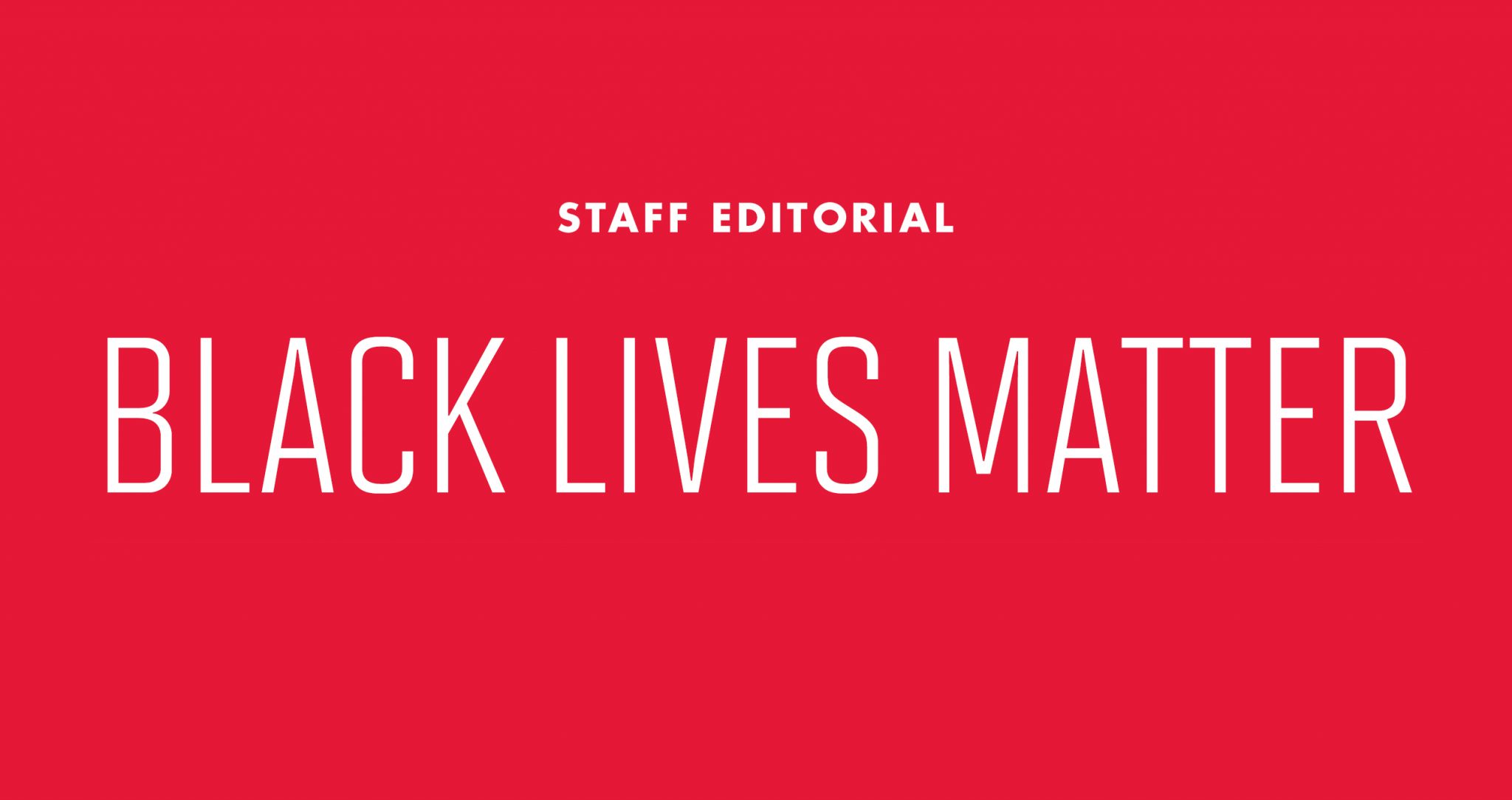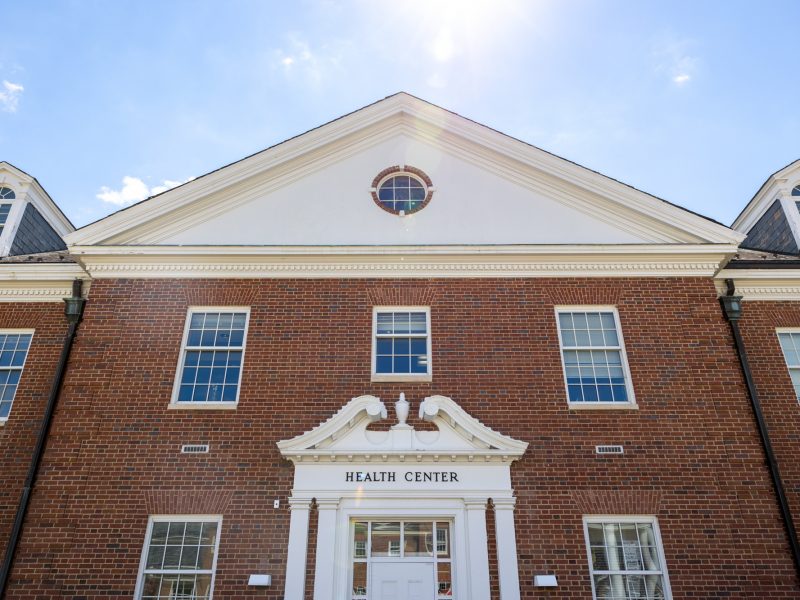Content warning: This editorial contains explicit descriptions of police brutality and anti-black violence, as well as descriptions of racist incidents at the University of Maryland.
Last week, George Floyd, a 46-year-old black man, died after a white Minneapolis police officer kneeled on his neck for more than eight minutes while making an arrest.
In March, Breonna Taylor, a 26-year-old black woman, died after being shot at least eight times by Louisville police officers who entered her apartment after midnight to execute a warrant that did not directly implicate her.
In February, Ahmaud Arbery, a 25-year-old black man, died after being shot by two white men while jogging through a Georgia neighborhood.
These are only a few recent incidents in the long history of violence and injustice against black people in the United States. So it’s no surprise that Floyd’s death — which has since been ruled a homicide — has sparked protests across the world, with police responding brutally to demonstrations in many cities.
This editorial board stands with the black community and with those protesting systemic racism. Black lives matter. In that vein, we demand strong, decisive action from the University of Maryland administration, rather than further empty gestures against a backdrop of years of mistreatment and neglect of the black university community.
On Sunday, university President Wallace Loh sent out a message of “solidarity” to the university community, stating that the administration is “deeply concerned” about systemic racism and inequity across the country and reiterating that the university must be committed to taking action.
The message itself was a telling sign of this university’s struggles to deal with its own problems regarding race. It was signed by many members of this university’s leadership, including Loh and athletic director Damon Evans — two men who bear some responsibility for the death of Jordan McNair, a black football player at this university. Signees also include diversity and inclusion vice president Georgina Dodge, who has a notably tense relationship with some black students who have concerns about potential changes to the Nyumburu Cultural Center and Dodge’s accessibility.
Though the message mentioned the university’s “painful history,” there’s unfortunately more to that history than the murder of 2nd Lt. Richard Collins. There’s also the series of hate bias incidents that occurred in spring 2017, including a noose and white nationalist posters found on the campus. There’s the time in 2016 that University Police used pepper spray to disperse a graduation party of predominantly black students — a use of force that could have been avoided, according to an internal investigation. There’s the campus climate survey that showed that, compared to other racial groups, black and/or African American students, faculty and staff feel the least safe on campus. There’s the fact that black freshman enrollment has been trending downward since 2006. And this list is nowhere close to comprehensive — these are just a few recent examples.
Loh’s email also included information about “opportunities” for students, staff and faculty to get involved, such as working with others to “engage in doing the work” and discussing readings about white supremacy with other members of the community. But the onus of taking action should not fall only on students, staff and faculty at this university. Rather than passively offering chances for community members to engage, the university needs to take real action.
To start, this university needs to adequately support hubs of black life in the campus community. The Nyumburu Cultural Center, in particular, stands out as a place where more transparency, clarity and resources from the administration would be welcomed. The Black Faculty and Staff Association and student groups such as the Black Student Union, the African Student Association and the Caribbean Students Association are routinely left by the wayside by administrators. It’s past time for these groups to be heard, funded and actively backed by the administration.
The university also needs to improve its reporting of campus hate bias incidents. In April, the university released its first report on such incidents, but it included little new information and did not cover punishments handed down. To truly feel the system is working in their favor, black students need to know the consequences for acts of hate bias — and transparency is needed to achieve that. Moreover, as we go into the summer and fall terms with increased virtual instruction and connection, it’s critical that acts like racist Zoom-bombings are accounted for and dealt with appropriately.
Similarly, the campus climate review process needs to be updated. The university announced the survey after Collins’ murder in 2017, releasing a preliminary report in May 2018 and a final report in May 2019. Two years is much too long of a wait for a result that was entirely predictable. The survey needs to be more regular and result in more than generalized recommendations — and the university should analyze and act on it more quickly and effectively.
The university could also turn its words into action by divesting from Maryland Correctional Enterprises, the state of Maryland’s prison labor arm. In 2016, The Diamondback reported that the vast majority of furniture at this university comes from MCE inmates who are paid far less than $2 per hour of work — well below the minimum wage. And it doesn’t appear that there’s been any meaningful change to stop this university’s participation in the prison industrial complex — a system that disproportionately targets people of color and perpetuates racism in this country — since then. Student groups, including this university’s NAACP chapter, have pushed the university to divest from MCE, to no avail. Black people are overrepresented in the state of Maryland’s correctional facilities, making up 69 percent of those in prison while composing 31 percent of the state’s population. Now is a perfect time to divest from a system that disproportionately harms the black community.
Beyond the campus itself, this university needs to make itself more accessible to black students in the county and state. Black students made up at least a third of the state’s high school graduates every year from 2015 to 2018, and 55 percent of Prince George’s County students are black. In contrast, only 11 percent of this university’s 2019 freshman class was black. This university needs to take explicit financial steps toward rectifying that gap, and it can start with tuition benefits for black Prince George’s County residents. This measure would help counteract the pervasive problem of racial income and wealth inequality.
The problems that plague this university — and this editorial board’s proposed solutions — are not new, but neither is the systemic oppression of black Americans that has led to the current protests. If this university actually wants to stand in solidarity with its black students, faculty and staff in the way it should, it needs to do more than email a canned statement to its Listservs.



